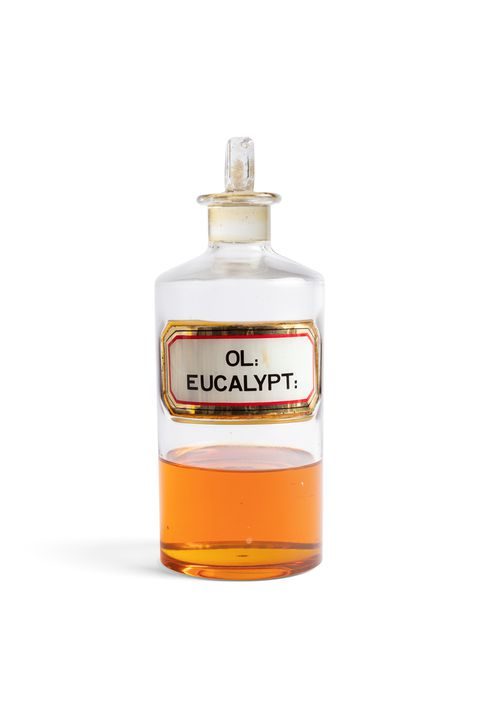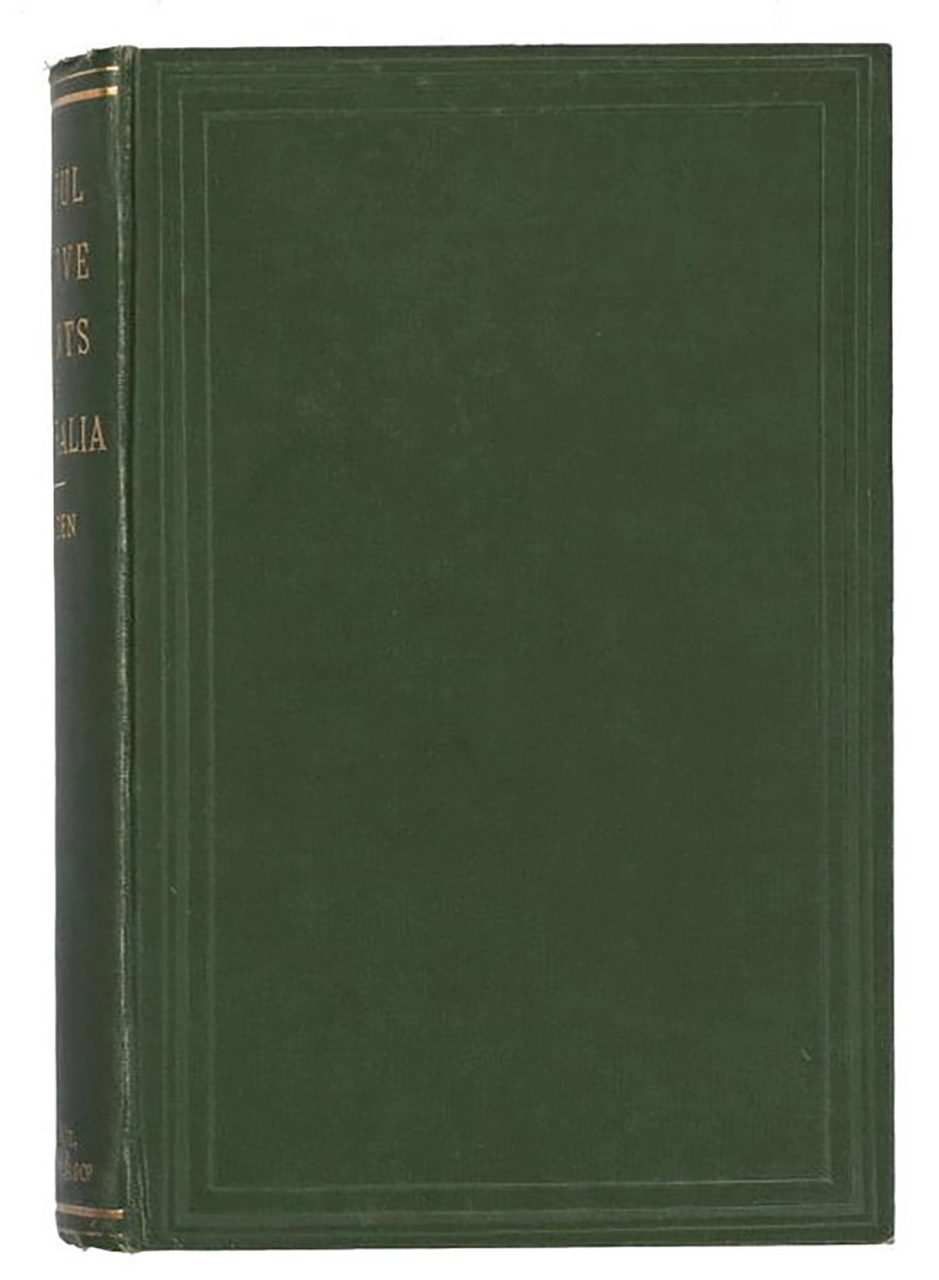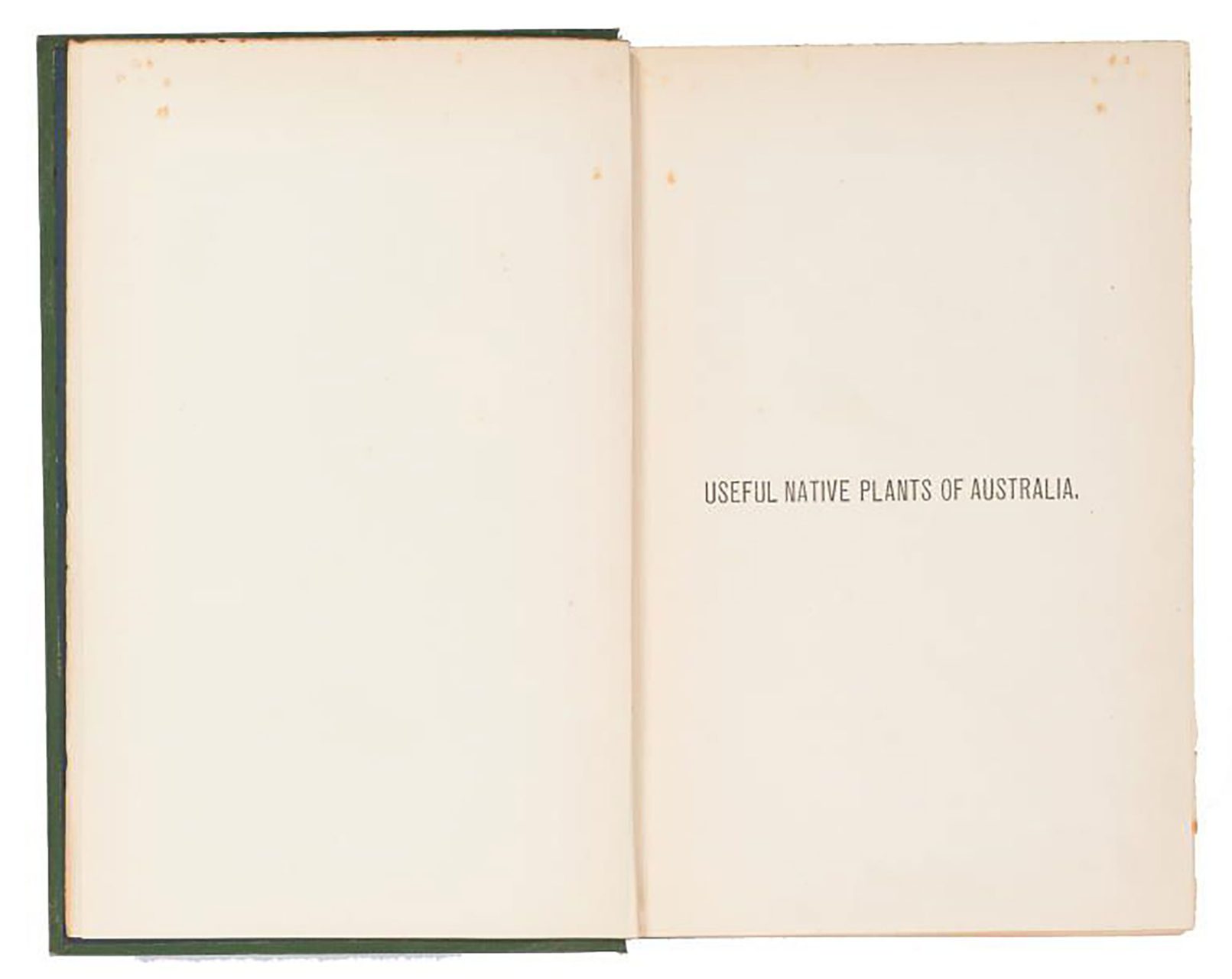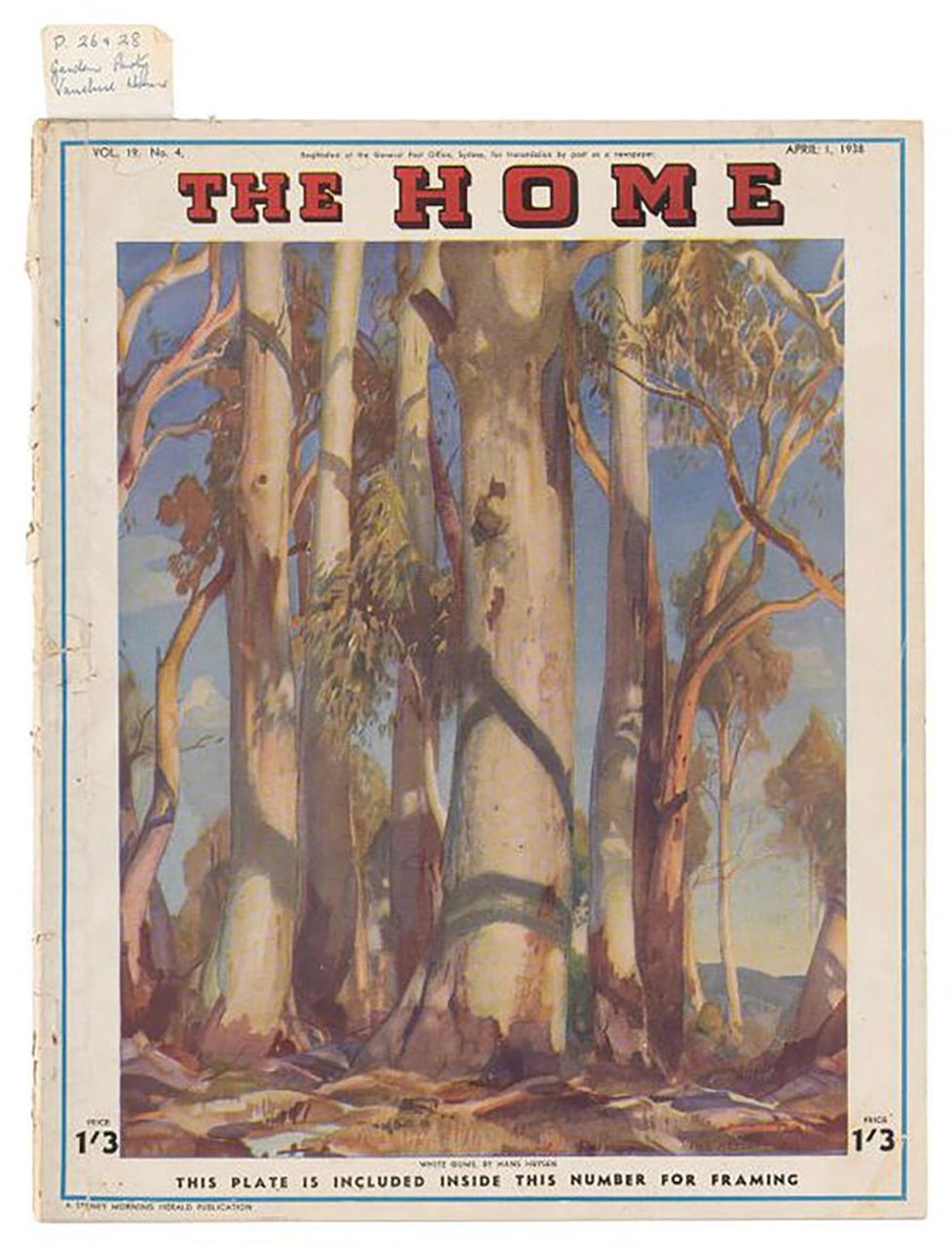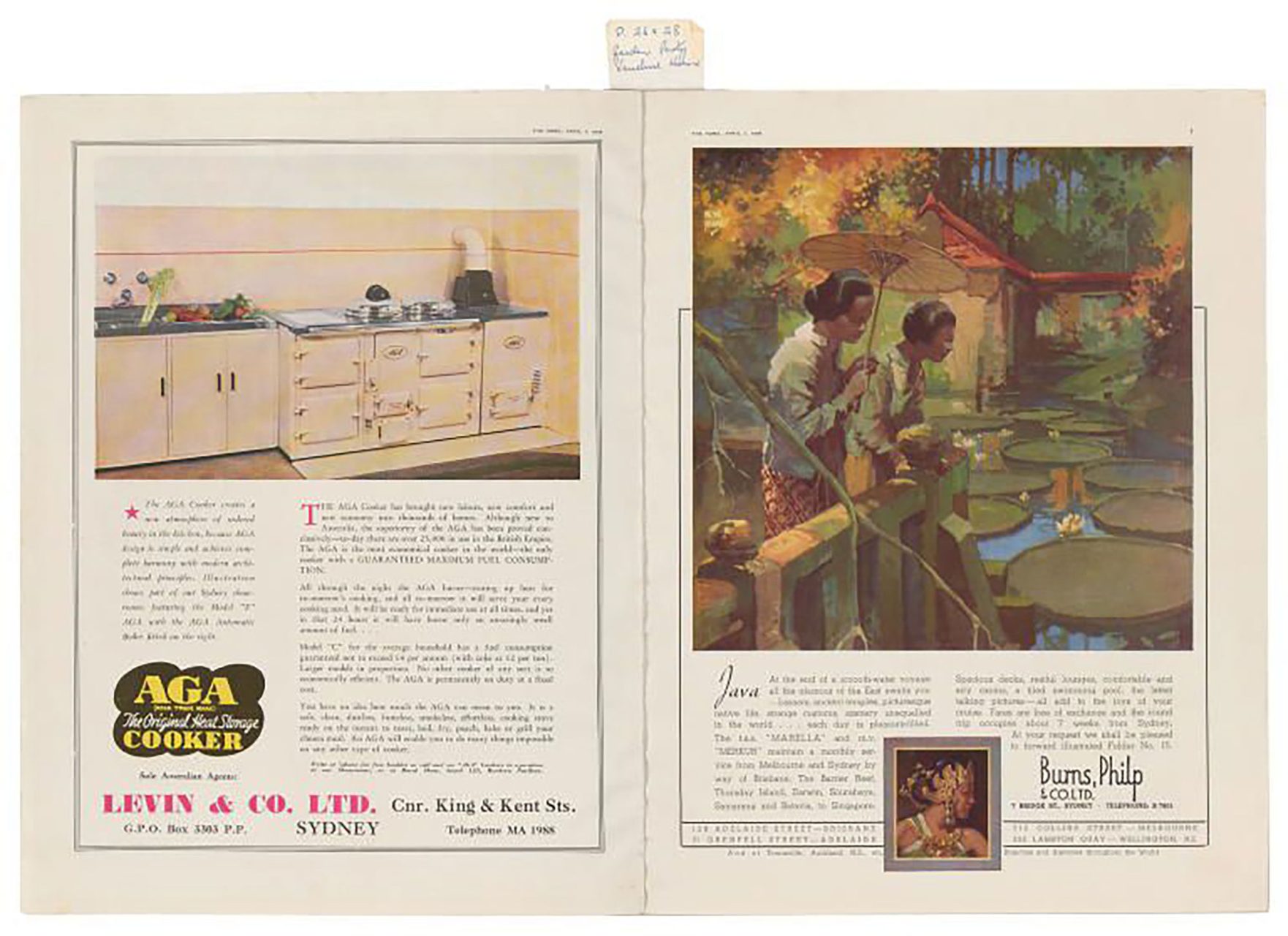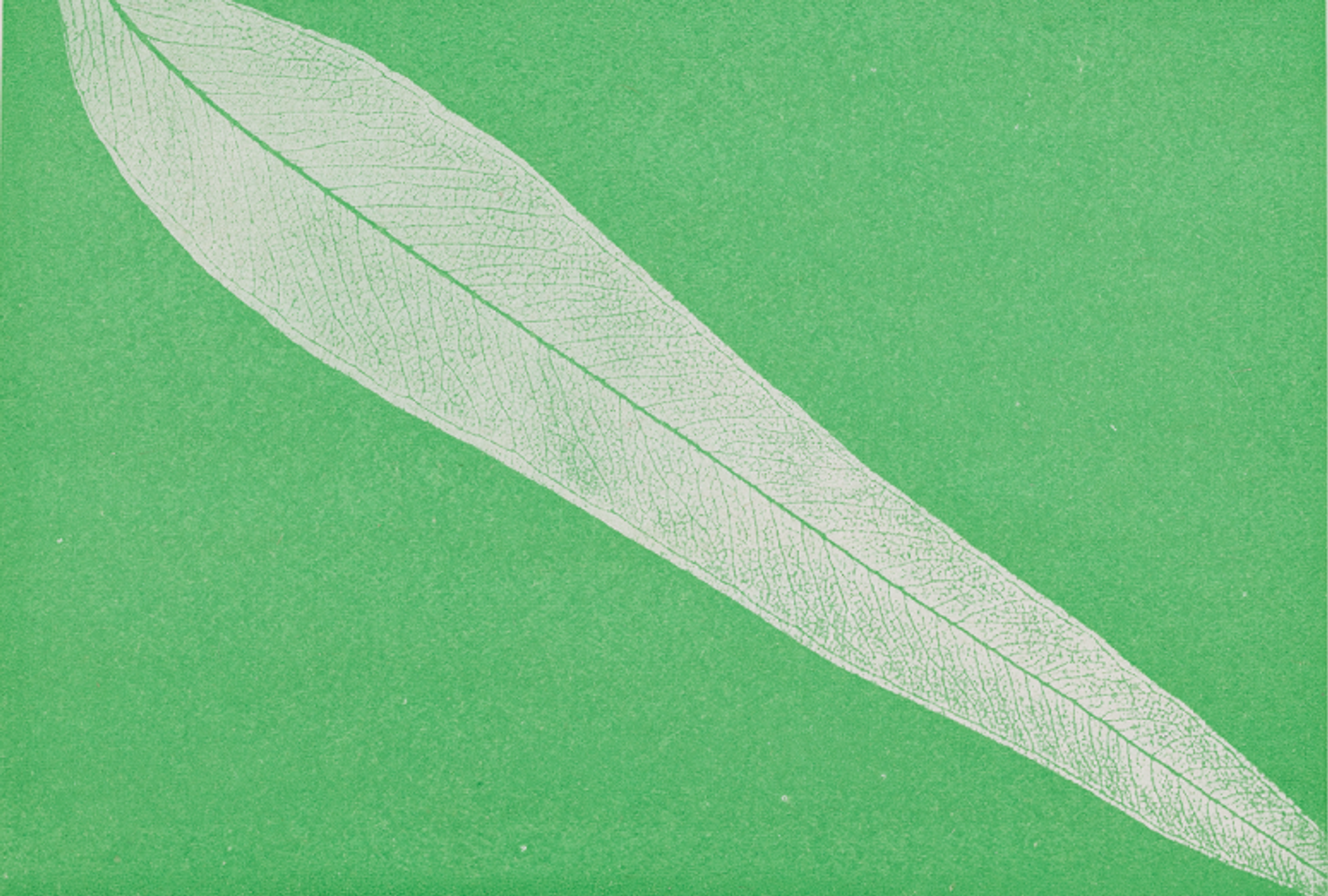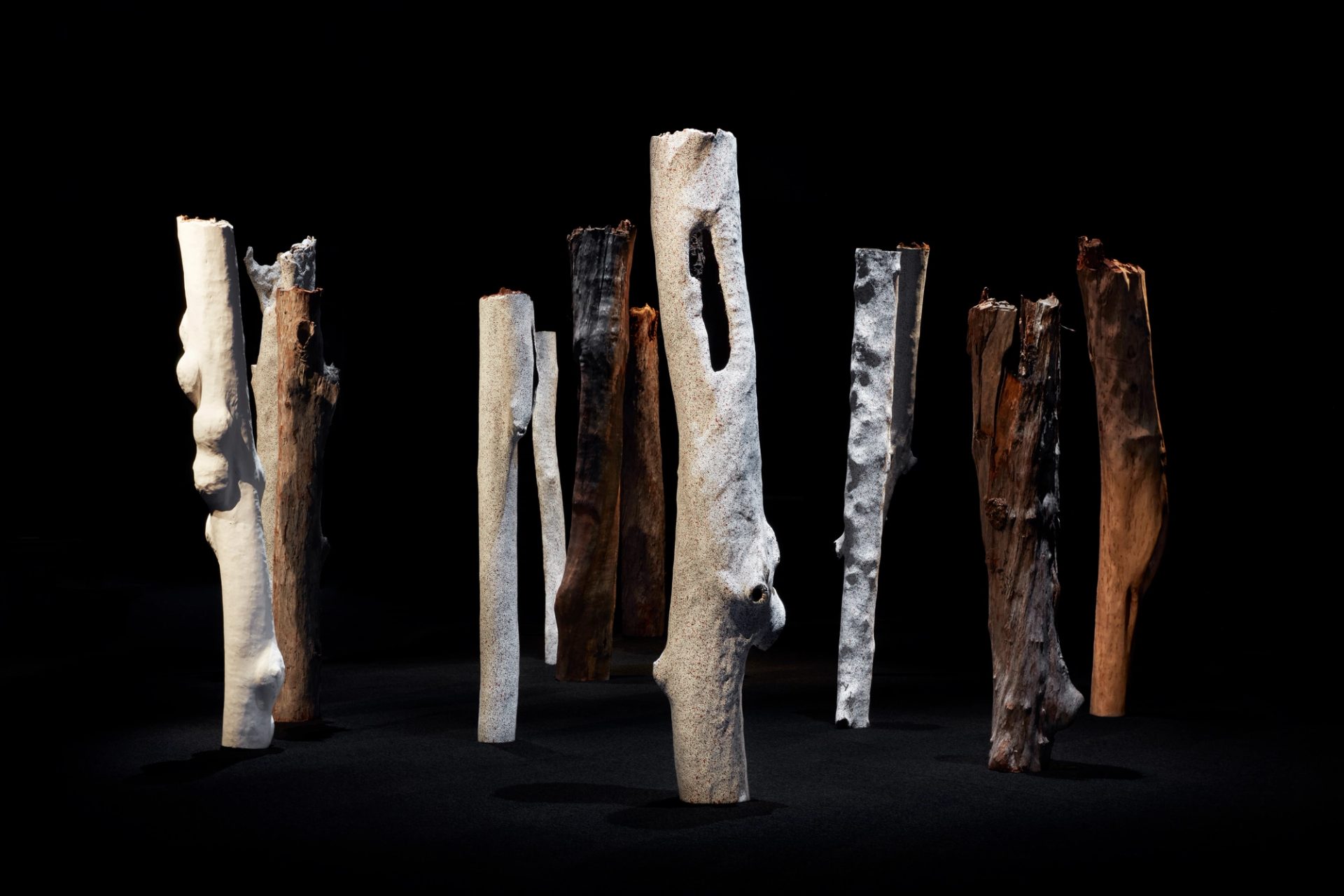In Relation – Spectres and Sentinels

‘Spectres and Sentinels’ is the final episode of In Relation, a five part podcast series by Powerhouse inspired by eucalypts and the Powerhouse exhibition, Eucalyptusdom.
We discuss the eucalypt as sentinel and witness to contested, obscured and enduring histories in Australia. What can we learn from trees that have withstood and absorbed the past, and what can this teach us about our futures?
‘Some of the Country where the trees are, I grieve when I visit, and other places are struggling to regain themselves in a way. But if a tree is living, there's hope, it's still part of a network.’
Transcript
Agatha Gothe-Snape The Powerhouse honours the Traditional Custodians of the land on which our museums are situated. We respect their Elders, past and present and recognise their continuous connection to Country.
We respectfully advise First Nations audiences that Eucalyptusdom and this podcast, In Relation, address the museum's colonial collection practices and include objects and materials of and from Country. This episode also contains references to colonial violence and the removal of children.
I'm Agatha Gothe-Snape, and I'm an artistic associate at the Powerhouse museum in Sydney, Australia. I co-curated the exhibition Eucalyptusdom alongside Nina Earl, Emily McDaniel, and Sarah Rees. This exhibition reckons with our cultural history and ever-changing relationship with the gum tree. It contains over 400 objects from the Powerhouse collection alongside 17 newly commissioned works.
This podcast is a series of dialogues around a selection of key themes connected to Eucalyptusdom. Featuring practitioners, curators, researchers, and writers it explores the way we learn with and from trees.
In this episode of In Relation, ‘Spectres and Sentinels’, we hear from Alisa Bunbury and Julie Gough. In different ways, both Lisa and Julie's research and practices bear witness to contested and obscured histories through the lens of the eucalypt. Here's Julie Gough.
Julie Gough My name's Julie Gough and I live in Nippaluna, which is Hobart, Tasmania. And the work that I make mostly refers to, and balances from, research and time spent on Country to learn about what happened in the first three decades, post British colonisation of my island home.
So, the work that I've made for Eucalyptusdom is directly related to locating and visiting sites where cross-cultural contact and mostly violent events occurred. And I sought and looked for what type of eucalyptus were there and focused on those being the centre of the frame. In most instances, or the witnesses to the events, they are their forebears.
AG-S Here's Alisa Bunbury. Alisa is the curator of the Grimwade Collection, bequeathed to the University of Melbourne by Sir Russell and Lady Mab Grimwade.
Alisa Bunbury My name's Alisa Bunbury, and I live and work on the land of the Woi Wurrung people in Naarm. And I grew up by the banks of the Birrarung, and I now live near the banks of Mary Creek, both of which are aligned with enormous, beautiful river red gums. I work at Melbourne University now as the Grimwade Collection curator. It's a collection of art books and archives with the centre being around white settler, colonial history. But through the core of that is Russell's very strong interest in, and love for, and work for Australian trees, Australian forestry, and particularly gum trees, which he was quite passionate about. The joy in working at the university is that we can look again at this material with fresh eyes and with many diverse voices calling upon academics and students, artists, and others, to help us interpret this material again in the 21st century.
AG-S In making Witness, her work for Eucalyptusdom, Julie was also readdressing archives. But in this case, the archives were witnessed trees themselves, accessed through complex negotiations with current landholders.
JG There's co-confirmation between speaking with people, being in the archives and exposing the records that are often cryptic, or sometimes there are parts that seem to be missing. So, confirming on Country, how that place would've been navigated by our old people and by colonists. So, fence lines as well and land grants. I'm really a little obsessed with trying to bring history to life again, through these different modes, reconnecting what otherwise live as these disparate or separate threads.
AG-S Julie's work Witness is a series of video portraits of eucalypts. These trees are still standing at sites of conflict and violence between Tasmanian Aboriginal people and colonists.
JG There's 35 short videos on seven screens. How to approach it was different for each one of those stories that I was trying to learn about through being there. Sometimes I spoke with people I knew in the regions where these occurred, to see if they knew maybe the landholder of that particular place. Sometimes I kind of wandered along rivers ... kayaked as well. There's just a whole different approach for each of these, according to where they were. Some are even nowadays on winery estates. I also wasn't always explaining to all of them the same level of detail of what had happened at these places.
AG-S Julie's practice also acts as a kind of cartographic tool. Through mapping these exact sites, she creates the potential for others to revisit these important and difficult spaces. This process also sheds light on how colonists and Julie's ancestors met and interacted.
JG For me, this is another level. Where we met, what happened – in this case violence. And this could be layered in a mapping sense with the numbers of Aboriginal children that were taken by colonists. So nearly 200 of those live with non-Aboriginal people before 1850. So can you imagine, if there's a way to work digitally, I'd like to continue to do so because the children taken, many of them would've been taken through violence massacre, et cetera, I'd suggest. So, these are ways to indicate what otherwise has not been well recorded by the perpetrators, of course not wanting to implicate themselves. So, the little that we can find of the violent events are mostly Aboriginal people attacking colonists, which I suggest there's a part two. And part one is not clearly evident, apart from these other ways of finding them through Aboriginal children and baptisms, the dates of the land grants coming in, the dates of the sheep arriving and becoming vast in number. So, yeah, there's a whole puzzle to put together. That will clarify what happened when, I think.
AG-S As well as bearing witness to colonial violence, eucalypts were a point of fascination for settlers connected intimately to both a new sense of identity and burgeoning industry. There is no doubt that Russell Grimwade deeply cherished eucalypts while simultaneously commodifying and commercialising them for timber and oil.
AB Russell's interest in eucalypts – I don't actually know quite how it came about, but it was certainly very strong by the time he was in his 30s, which is in the 1910s. So, he was born in Australia. He was a first generation white settler. His parents had come out in the 1860s. So, he was part of this generation who saw Australia as their home and sought ways to connect their affinity to the country they were born into with their Imperial family history and relationship to Great Britain.
The way in which Russell approached his gum trees by and large, I think was on mass rather than individuals. And he was often thinking in the broader picture in the preservation and the utilisation of Australian timbers. He was a very keen wood worker on a personal level, but he was also a very strong advocate for Australian timbers as a commodity, as well as an object of beauty and an object of importance.
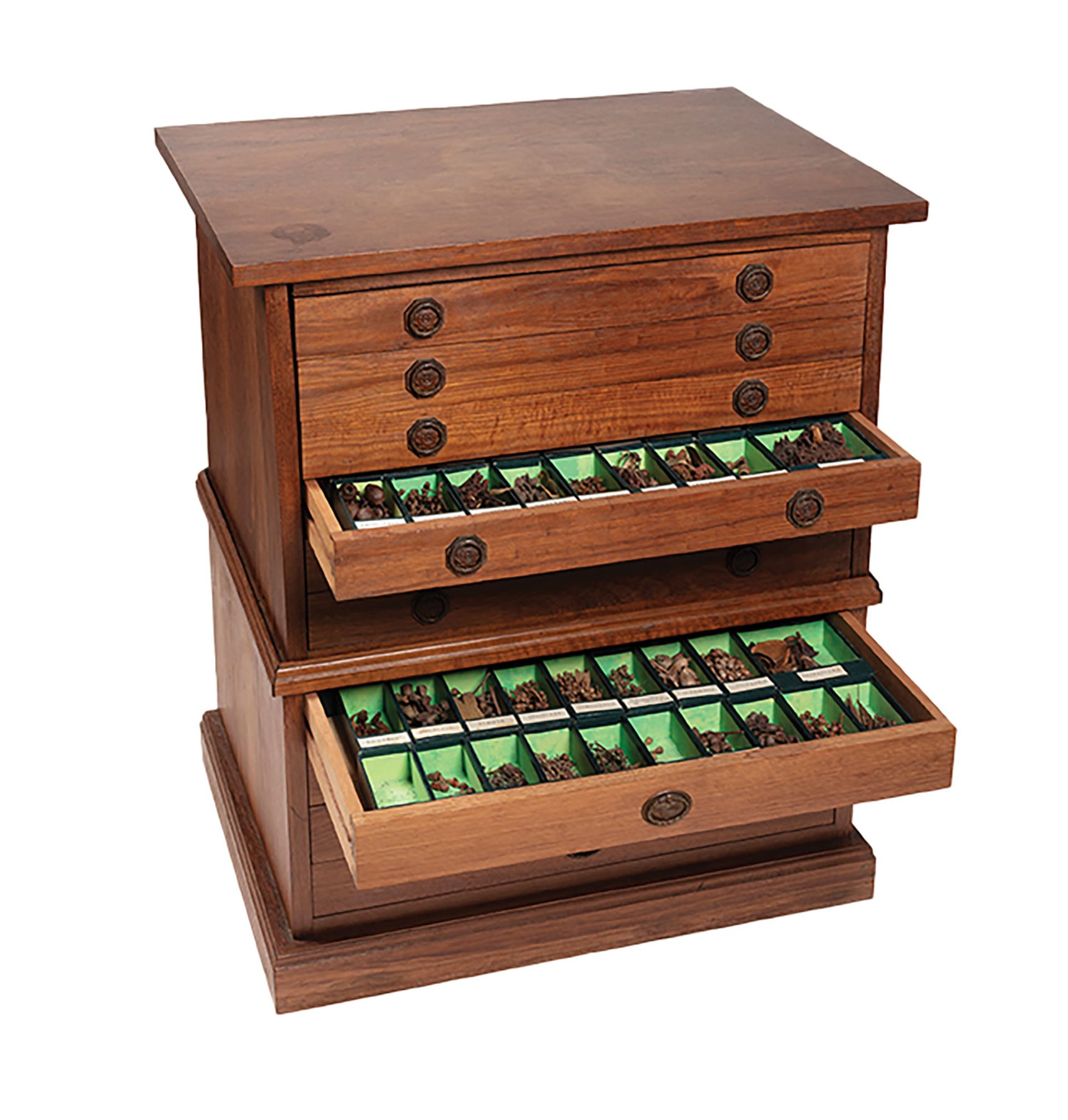
AB He was involved in organisations, such as the Australian Forest League, for many decades, and also organisations, such as – the name hasn't stood the test of time – The Empire Forestry Association. So that's across the Commonwealth, thinking about the use of timbers and woods. He spoke very strongly about the importance of protecting the timbers, protecting the forests, protecting the woods, using them.
Certainly, he was not saying ‘Don't log’, but the importance also of those timbers in protecting waterways and protecting the soil. And again, thinking in the macro, this was also the time in the 1930s he spoke very strongly about this when they were seeing an America, enormous floods and enormous dust storms. And they were realising that damage that had been done by that invasion of country was having the same impact in Australia. But it also comes down to the micro level.
There's a lovely story: he was a very keen motorist in the early days of motorcars and the garage at the House Miegunyah caught fire. And he yelled at the firemen to not waste their efforts on the garage, but to save the tree beside the garage; that the tree was more important. That was what needed to be saved. I found recently a reference in his will, which is where he bequeathed much of his collection to the university. He said, ‘The trees in the grounds of the House Miegunyah shall be cherished. And if any of them die, they have to be replaced with sensitivity.’
AG-S There are many ways to think about these knife-edge contradictions of care and exploitation, love and destruction that characterise colonial relationships to this place and to these trees. Julie and Alisa both look to understand and communicate the ongoing legacies of these histories.
JG There's an emotional connection possible, hopefully through much art. And then I also try to offer ways into learning more detail, whether it be archival and when available from those times direct Aboriginal recorded experience as well. My feeling in building something to share hopefully comes through the sense that I have, which in accumulating, it was becoming more distressing, but I also couldn't stop.
I came to 35 trees and places because that was when the deadline of time was reached. I'd still be out there otherwise. Like, I felt it was difficult to choose any one, two, three, ten places to be the ones that stand for everything. I just kept going because the whole of the island is a crime scene. What I try is to share through making it what I was undertaking and going through, but also providing the means by which people could take this further. If they're interested in learning more, that this is locatable, anyone could consider very similar actions having taken place, where they live across this continent.
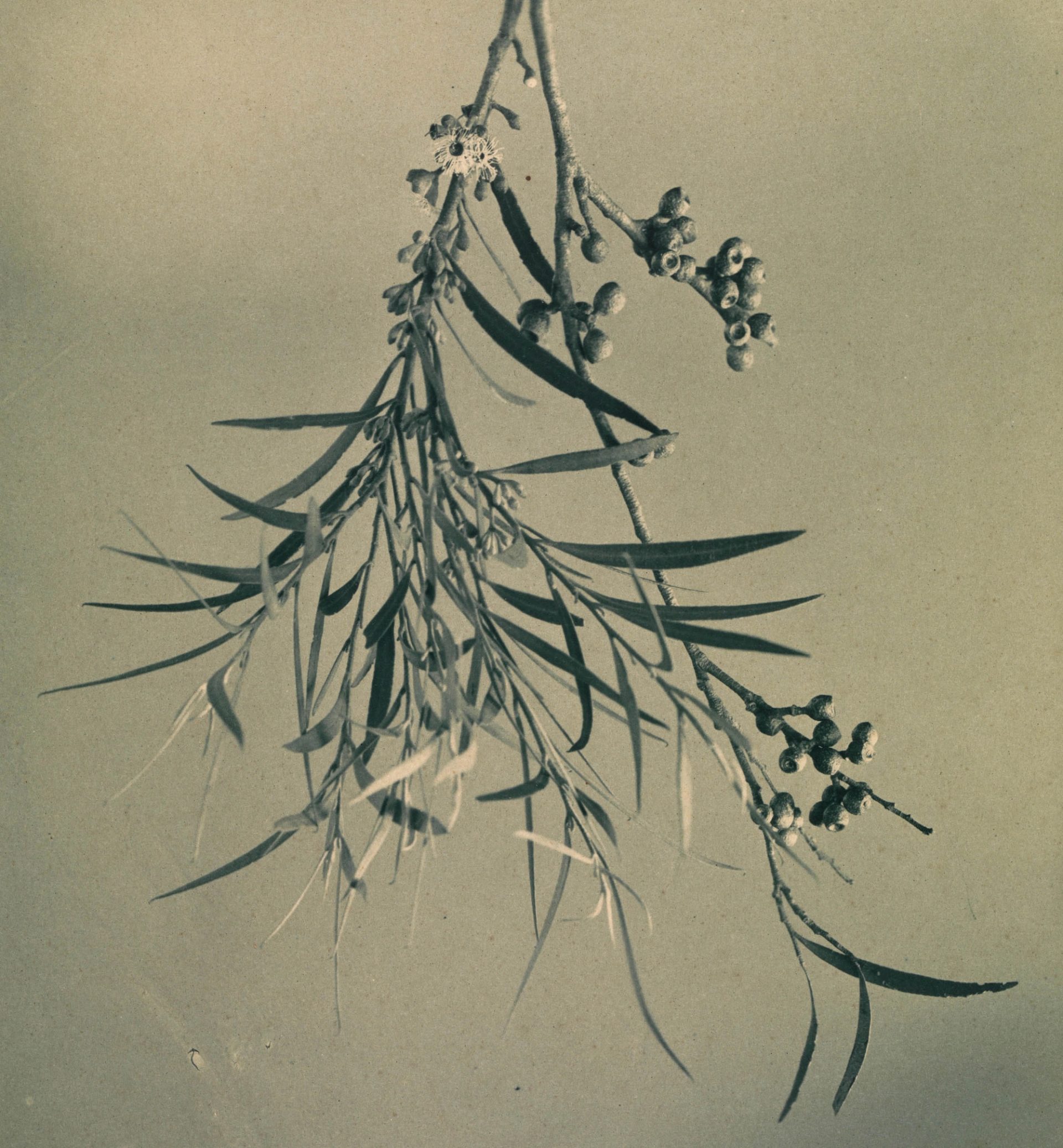
AG-S Alisa has been rethinking the Grimwade Collection, looking more broadly and deeply at who it represents and who it doesn't. With new eyes, perspectives that were sidelined or suppressed can be acknowledged, respected, and centred.
AB This material and so much of our Australian history has been seen through such narrow-blinkered eyes. And it's our duty to look again at this and to ask as many people as possible, I think, to bring their points of view and their knowledge and their experiences to this material. And the challenge on the viewers and listeners, readers, however people are accessing our history, is to be open to these new thoughts and new ideas, and to think again about their own understandings.
I grew up in Heidelberg, [a] beautiful leafy area. We literally had a beautiful, exquisite river red gum, that would've been pre-Melbourne being founded, in our garden. And I took it for granted. It was just part of my garden. And now I think back, unfortunately it's not there anymore, but my parents fought so hard to keep it healthy and to keep it safe. And now I think, what an extraordinary privilege that was and think of, gosh, the generations of people who lived on that land before me, that I was so unaware of in my childhood. And we need to be so much more aware of all of that past history and the present and the impact that that still has now.
AG-S Trees hold both knowledge and experience. They can offer us a sense of continuity across time.
JG The trees give you a sense that they've absorbed what happened. They're still trying to survive in, often in very desolate landscapes today, where there's been too many sheep and too little care. Some of the Country where the trees are, I grieve when I visit, and other places are struggling to regain themselves, in a way. But if a tree is living, there's hope it's still part of a network subterranean and above. Often you will hear the birds of the region coming and going. And that also gives you a feeling of the old times.
AG-S Through her work with the Grimwade Collection at the Ian Potter Museum of Art, Alisa is researching towards an exhibition that will trace depictions of the gum tree through history.
AB At the moment, I'm looking particularly at settler artists, non-Indigenous artists. Of course, Indigenous art will be critical to this exploration, but a lot of the early art right through well into the 20th century often emphasises the entity of a sole surviving gum tree or group of gum trees. Often you get the artist, John Glover in Tasmania, looking at the powerful big gum tree in the landscape; Hans Heysen in the Flinders Ranges in South Australia; for example, Harold Cazneaux famous for his photograph taken in the 1930s in the Flinders Ranges titled The Spirit of Endurance. And that tree is still a tourist site in the Flinders Ranges to this day. It still survives. It has endured, as the title says. But I find very distressing when traveling through landscapes, such as Gippsland in Eastern Victoria, where you see a surviving tree like that, towering. People have always seeking the biggest, the tallest.
I think it's a real flaw of Western thinking, but these exquisite big trees, they indicate what's been lost. They’re evidence of the clearing of land, they’re evidence of forests that were once all that big and all that tall and that they have now been destroyed. I personally find it quite problematic that people talk about the aesthetic appeal of these landscapes today. And I think I used to feel like that. And I'm increasingly becoming aware of how much they indicate loss and destruction and damage. When you think that they're indicating that something like maybe 25 per cent of eucalypts are under threat of extinction at the moment through climate change, it's a terrible situation we've got ourselves into.
JG I've looked at them with sorrow over so long, and that since they're holding out, they're trying, but there's a few places where there's like, three or four or five, and I just see them as family. Farmers here create these giant piles of dead eucalypts that eventually they burn. I've filmed a few of those because it feels very violent and sacrificial and all kinds of things, what's going on. This sort of feels like a claiming and a clearing. That's also really disturbing. At least in the Glover paintings they're still lying on the ground as habitat, you know, but rarely here do you see anyone leave the limbs or the dead trees for long.
AG-S For both Julie and Alisa, the lack of new growth is distressing. Revegetation is essential to the survival of trees and the ecosystems they exist within. But the ongoing clearing of so-called unimproved land is making things worse.
AB The lack of new growth – I think that's the thing that I also find so distressing. So many paddocks might have a few surviving trees that give never enough shelter to the stock that might be under them. So rarely do you see the new generations growing up from small seedlings to mid 20-year-old saplings to hundred-year-old juniors. You know, they're still young. I think that for the longevity and once those big trees are gone, those paddocks are empty.
JG Some of the farmers I did speak with, been very telling conversations. So, trying to find places that were massacre sites at the long swamp, well, there's no long swamp anymore, but also walking up the top of a hill with a farmer and suddenly instead of desolation and desecration, there's small orchards and beautiful rocks for lizards. And I said, ‘Oh, this is incredible up here.’ And the farmer looked at me and said, ‘Oh, this is unimproved land.’ That's the language – unimproved land. And then another farmer talking about the need to try to flatten it all, get rid of the trees so they can do the pivot watering system. So, removing the trees, but also the undulations, the lay of the land also scraping up and getting rid of evidence of Aboriginal occupation, right? That's all of it. It's all interconnected and fairly horrific at every level. I wanna quiz Alisa more on colonial art and trees. I'm interested in how eucalyptus trees reach the masses overseas. I mean, what they thought of these trees elsewhere.
AB Well, one of the things that you're talking about, trees being removed, the swamp no longer being present, I mean, trees were taken to places like Italy in the 19th century. Gum trees were introduced to clear swamps, to drain swamps which were the source of malaria mosquitoes. But I'm also interested in looking at attitudes towards the sort of European spiritual association with gum trees.
In Russell's library there's a book called Sylvan Botanica and it's full of etchings of English trees. And there's one called Sir Phillip Sydney's Oak and it was a famous oak tree that people would travel to. And if you're thinking back to all different forms of spirituality in various cultures throughout Europe and throughout the world, the sentinel tree has often been, and continues to be, worshipped.
I think we sometimes forget that the British were coming with a strong sense of connection to trees of that ilk. Of course, they were coming with their own sense of connection to nature. And some certainly didn't connect with Australian gum trees with the falling bark and not losing their leaves. Whereas certainly there was a strong sense of association and identity as they started to appreciate the country that they were now living in.
JG Some trees I can hear ancestors and that's not always all times, but sometimes you can hear. I think that they're just holding on to before. And then when they're living, there's that always that potential that it can recover. And that's how I feel about Aboriginal people and our culture is that we are holding on.
AG-S In their research and practice Alisa and Julie take deep dives into contested and obscured histories. They reanimate and interrogate colonial, and First Nations histories through the lens of the eucalypt as sentinel, witness and survivor.

In Relation: Spectres and Sentinels
Host: Agatha Gothe-Snape
Featuring: Alisa Bunbury and Julie Gough
Commissioning editor: Lisa Havilah
Editor: Mara Schwerdtfeger
Sound design and theme music: Jane Sheldon
The In Relation team includes Ayeesha Ash, Callum Cooper, Rebecca Gallo, Anna Gardner, Emily McDaniel, Sarah Rees, Hannah Saunders, Cara Stewart and Agatha Gothe-Snape.

















